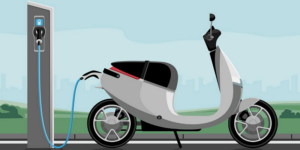For most heavy equipment owners, it is difficult to find spare parts for their machinery from the original equipment manufacturer (OEM) after the initial warranty expires. These owners often have to rely on aftermarket suppliers to buy and replace these parts.
However, different, upgraded versions of these machines come up every year, making it even more difficult to find the right part among different models, makes, and versions.
To solve this, Ajay Anand, along with Kumar Palangappa, Umesh Sangurmath, Ravi Anand Rao, Avinash Sangurmath, and Sumit Bhosale founded YantraLive in 2018. Early investors Vikram Joshi and Ajay Anand also joined in as co-founders in 2021.
The Bengaluru-headquartered startup’s B2B digital platform acts as a one-stop shop for heavy equipment and their parts, spares, consumables, and services for buyers.
“We see an opportunity to bring in technology, simplify this whole complexity, and give a solution on a technology platform,” says Ajay.
What it offers?
YantraLive initially started by supplying parts and services on its platform.
The machinery, due to the nature of the industry, has to go through a lot of wear and tear. The owners need to change filters or loops and prepare for unplanned breakdowns too, where the engine or electric components might not work properly.
Ultimately, the machines end up needing repair and maintenance almost every month.
The platform primarily deals with equipment like bulldozers, JCBs, excavators, loaders, electronic pumps, etc., that are used in construction, mining, and agriculture sectors.
Along with this, the startup also provides services to infrastructure firms, fleet owners, and servicing workshops, among others.
The market and revenue
YantraLive earns its revenue by making a marginal profit by selling parts on its platform, and by leveraging its knowledge network of suppliers, which allows it to source and deliver them. These are dealers, retailers, traders, and direct manufacturers.
“You cannot win this industry by building a large inventory because you don’t know which machine will break down where, and what model you should retain,” says Vikram.
The startup uses “a technology-led approach of identifying who has the inventory and the ability to move it fast,” he adds.
To deliver it to the customer, the startup has franchisee partners in small towns, from where the customers can get the equipment rather than travelling a long way. It is working to make it more efficient.
Overtime, the startup started offering other services such as repairs of hydraulics, engines and electrical parts, onsite fitment, and general inspection, including breakdown repairs, troubleshooting, and preventive maintenance of these equipment.
YantraLive’s target customers are large infrastructure companies that work on government contracts, individual owners leasing the heavy equipment or global companies, which buy parts or machinery from India.
At present, it serves 40 customers which includes infra companies like Ashoka Buildcon, Urmilla Enterprises, Balajee Infratech, and 30-40 are its export accounts. It claims to have served over 1,000 individual customers and delivered more than 10,000 SKUs in total.
The construction equipment industry had a turnover of $6.5 billion in 2020-21, according to an activity report by Indian Construction Equipment Manufacturers’ Association. Considering the used equipment, parts, services, and rental market, the market size for Yantra is even greater.
In January 2022, the startup raised $1 million in a seed round from GrowthStory and other angel investors, including Bigbasket co-founder Vipul Parekh.
Product differentiation
One of the places where YantraLive tries to differentiate itself from other marketplaces such as Equiphunt & iQuippo is by helping its customers identify parts, which could be used as a replacement.
“Over the years, we have created a knowledge network in the backend, where a relationship network of all the parts and the associated aftermarket parts has been built,” says Ajay. “There is metadata in the backend so there is easy part discovery,” he adds.
Simply suggesting replacement from OEM does not solve the problem, says Ajay. “Either they’re expensive, or their dealership in India is not so extensive that they can supply to every single person who’s asking for a spare part.”
So, YantraLive goes beyond that by recommending right fits from the aftermarket. On the company’s end, this involves cataloguing equipment digitally and finding the right parts, even from the aftermarket, that fit and work well.
The startup uses artificial intelligence and language processing to understand and help users predict the right replacement for the worn-out parts.
“Our ability to guide people as to what they should buy makes us different,” says Vikram.
With more transactions, the system is able to learn better and serve about 90 percent through this learning algorithm, he adds.
What next?
YantraLive is working to bring more technology solutions to the industry’s problems. “It will manifest into a solution for the customer and business for Yantra and it is a win-win for both,” says Ajay. This will open up new revenue streams, he says.
In line with its strategy of becoming the ‘One Stop Shop’, YantraLive allows its customers to digitise their inventory, making it easier to keep track of their hundreds of machines on different project sites.
It also allows them to access data in a clean and systematic manner, using which they can recommend preventive actions for the machines.
Most of YantraLive’s customers are not tech-savvy, so the key is to build an easy platform that is accessible on the phone.
“We made it conversational-first,” says Vikram, explaining how the community functions through a network of people. Through WhatsApp and Facebook bots, customers can communicate and get feedback on what to do with parts that have gone wrong.





![Read more about the article [Weekly funding roundup] November ends on a high with over $1B inflow](https://blog.digitalsevaa.com/wp-content/uploads/2021/09/Image5wy1-1630828923435-300x150.jpg)




